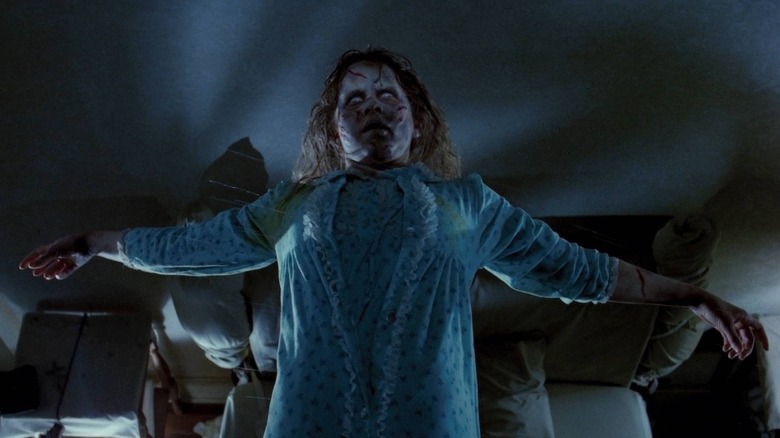
Few major Hollywood pictures have developed the kind of infernal reputation that "The Exorcist" has since its release in 1973. The audience reaction to its shocking scenes is the stuff of legend and religious figures have widely deplored it. The United States Conference of Catholic Bishops' Office of Film and Broadcasting (USCCB-OFB) condemned the film; The Christian Century labeled it "hardcore pornography;" and evangelist Billy Graham also had plenty to say (via Sage Journals). He stated that watching the film was like "exposing oneself to the Devil" and that "there is a power of evil in the film, in the fabric of the film itself" (via True Crime Edition).
Was Graham right? If the myth is to be believed, "The Exorcist" was surrounded by malevolent forces from Day One; William Friedkin's production was apparently beset by a series of mishaps, bad omens, accidents, injuries, illnesses, and even deaths, with nine people either directly or indirectly connected to the film passing away during the shoot. The set burnt down and a 10-foot statue of the demon Pazuzu got shipped to the wrong continent by mistake, causing a lengthy delay. A carpenter cut his thumb off while a lighting technician lost a toe. Linda Blair's grandpa died, as did Max von Sydow's brother. Jack MacGowran, who played Burke Dennings in the movie, passed away shortly after the film wrapped (via American Hauntings).
A curse or just plain bad luck? I'd opt for the latter, but I guess when you're working on a film about age-old demons you might be forgiven for feeling more superstitious than usual. Nevertheless, the infamy of "The Exorcist" and, to a lesser extent its sequels, has persisted over the years. With its special evil aura, it is perhaps little wonder that the series also has a long and troubling history with the worst humanity has to offer.
The Zodiac Killer
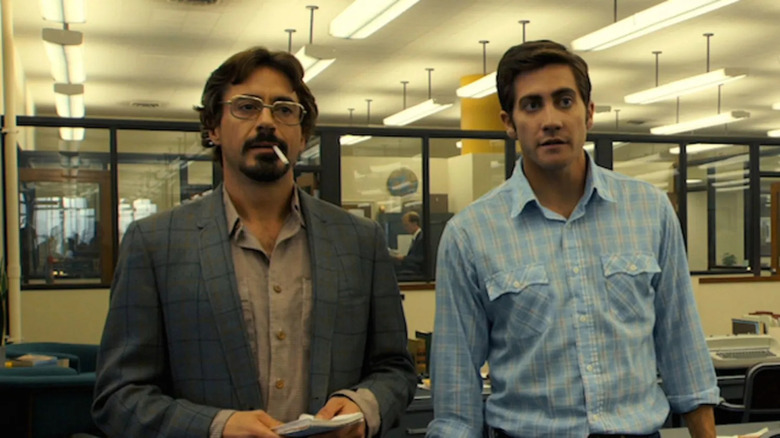
The still unidentified Zodiac Killer, who provided the inspiration for both "Dirty Harry" and David Fincher's excellent procedural "Zodiac," operated in the San Francisco Bay Area in the late '60s. The Killer was responsible for five confirmed murders, but claimed up to 37 in total, stating in a series of taunting letters to the local press that he was collecting them as slaves for the afterlife. Adding to the mystery, he also sent four cryptograms to the press.
The unsolved nature of the case has kept the Zodiac Killer in the public imagination and amateur sleuths are still trying to crack it over 50 years later. One of the Zodiac's ciphers, sent to the San Francisco Chronicle in 1969, wasn't solved until 2020 (via Washington Post). The message in the "340 Cipher," verified by the FBI, opens with the line "I hope you are having lots of fun in trying to catch me" and references a TV show, which experts believe refers to Jim Dunbar's talk show in 1969 when someone called in identifying themselves as the Killer.
Some people have suggested that the Zodiac Killer remained active into the '80s, and several armchair detectives have claimed to crack the case. One of the most cited suspects, the only publicly-named person of interest by the police, was a sex offender named Arthur Leigh Allen, although this claim was never substantiated. As recently as 2022, author Jarett Kobek suggested another compelling suspect in his book "How to Find a Zodiac" (via The Guardian).
In his final letter to the press in 1974, the Zodiac Killer referenced "The Exorcist," calling the film "the best saterical comidy [sic] that I have ever seen." William Peter Blatty later based the serial killer in his novel "Legion" and its film adaptation "The Exorcist III" on certain aspects of the Zodiac case.
Paul Bateson
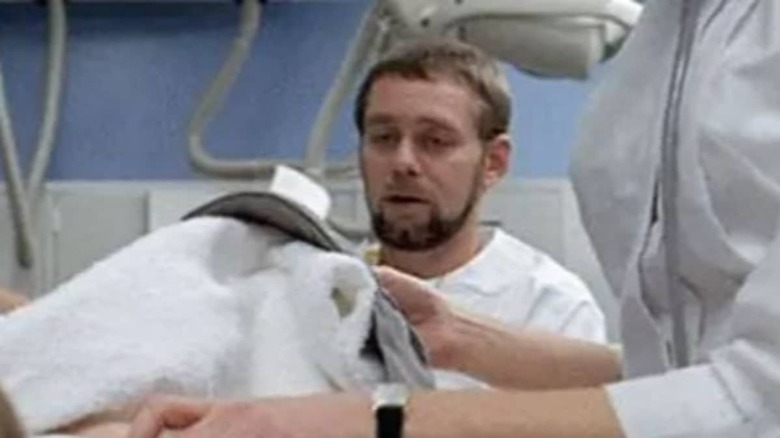
"The Exorcist" even featured an alleged serial killer in a small role. Radiologist Paul Bateson, who appeared in the upsetting hospital scene where Regan receives an angiogram, was later convicted in 1979 for the murder of writer Addison Verrill. Details about the crime were gleaned from a call that Bateson made to Arthur Bell, the Village Voice writer who covered a range of LGBTQ issues in the '60s and '70s.
Bell informed the police about the call and was given NYPD protection. An unidentified caller later the same night identified Bateson as Verrill's killer and the police went to his apartment straight away to take him into custody. Bateson knew why they were there, indicating to a copy of the Village Voice with Bell's article about Verrill's murder (via Esquire).
Bateson was also linked to six other men who were found dismembered in the Hudson River. The prosecutor claimed that Bateson bragged about killing and cutting up other victims, but the evidence wasn't substantial enough to indict him for the murders. He was sentenced to a minimum of 20 years in prison in 1979. This series of murders in the mid-'70s inspired William Friedkin to make "Cruising," having previously turned down the chance to direct an adaptation of Gerald Walker's novel of the same name, which focused on a serial killer preying on NYC's gay community.
Just to add another sinister connection, a few days after "Cruising" was released in theaters, a Texan woman suffering from paranoid schizophrenia cut out her 4-year-old daughter's heart after watching "The Exorcist" on TV. She had become convinced that the girl was demonically possessed (via UPI).
Jeffrey Dahmer
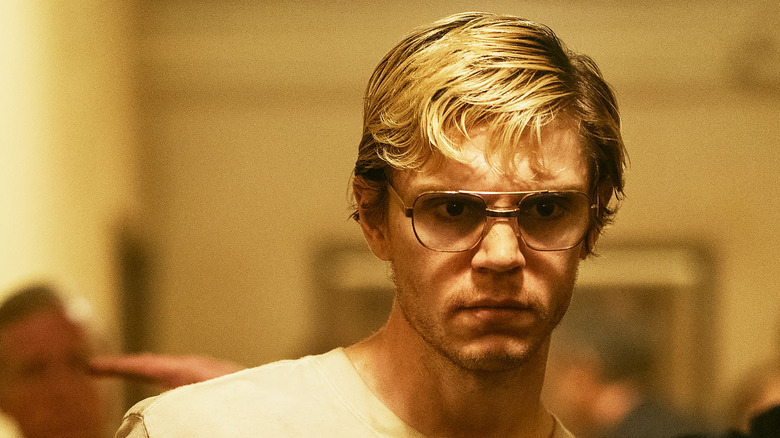
There is a cyclical nature to the way life inspires cinema and cinema inspires life. William Peter Blatty based the Gemini Killer in "Legion" and "The Exorcist III" on the Zodiac Killer; in turn, Blatty's creation became an inspiration for one of the most notorious serial murderers in American history.
Between 1978 and his arrest in 1991, Dahmer murdered 17 boys and young men. During his high-profile trial, the details of his crimes were revealed to be of a particularly grisly nature (via Crime Museum) which I'm not going to get into here. Dahmer plead insanity but it didn't wash; he was sentenced to 15 consecutive life sentences with an additional one added after he entered a guilty plea for the murder of his first victim.
One of the focal points of the trial became Dahmer's obsession with "The Exorcist III." He watched it repeatedly and Tracy Edwards, the would-be victim who managed to escape and tell the police, testified that the killer played the film on VHS as they sat together on a bloodstained mattress (via Pink News). Edwards was lucky to get away, and his alert led directly to Dahmer's arrest. Dahmer was beaten to death in prison by another inmate in 1994.
The prominent link between Blatty's film and the notorious serial killer perhaps overshadowed its return to form for the series, but Dahmer wasn't just a fan of "The Exorcist III." He also bought yellow contact lenses so he could look like Emperor Palpatine in "Return of the Jedi" (via Movie Maker). Both movies came up again recently in the Netflix series, "Monster: The Jeffrey Dahmer Story" but it is the connection to "The Exorcist III" that sticks the most, perhaps because of its focus on religious evil rather than galactic villainy.
Danny Rolling, Aka The Gainesville Ripper
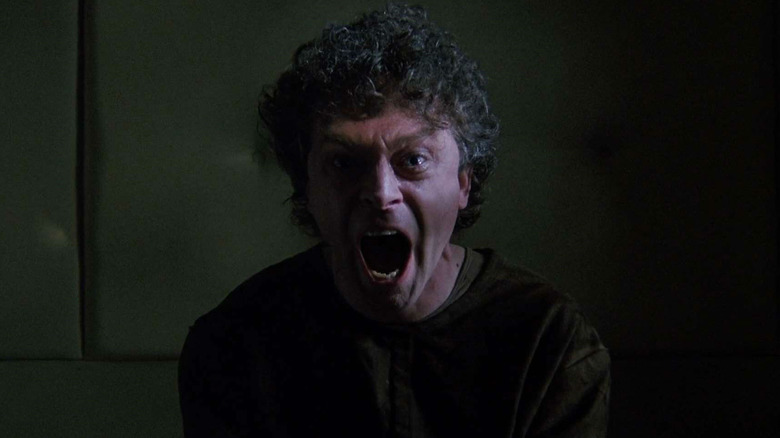
"The Exorcist III" also became known in another lesser-known case. Only a few months after Jeffrey Dahmer was sentenced in 1992, Danny Rolling, aka the Gainesville Ripper, was charged with the murders of five college students over a four-day killing spree in 1990. By that time Rolling was already in jail and potentially facing multiple life sentences for a series of armed robberies (via Biography).
During his trial in 1994, psychiatrist Dr. Robert Sadoff testified that Rolling believed he had an alternate personality called "Gemini" and may have been emulating what he'd seen while watching "The Exorcist III," possibly hours before he embarked on the series of killings ( (via AP News):
″Gemini is a part of Mr. Rolling's persona... Mr. Rolling deals in magic, fantasy and mysticism.″
Initially pleading not guilty to the crimes, Rollings changed his plea just before the trial. Mental health professionals decided that while personality disorders were a factor in the crimes, Rollings was sane enough to understand what he was doing. He was sentenced to death by lethal injection and later claimed responsibility for an earlier case in Shreveport, Louisiana, where three family members were slain and posed in a similar fashion to the Gainesville victims. Rolling was executed at Florida State Prison in 2006.
In the early '90s, the Gainesville Ripper case came to the attention of a bit-part actor and budding screenwriter called Kevin Williamson. After watching a true crime show that focused on Rolling's crimes, he was inspired to write a script called "Scary Movie" about a killer preying on college kids who knew all the tropes of horror flicks. That script became "Scream" which, in turn, inspired two Idaho teens to kill their friend in 2006 (via Lad Bible), continuing the cycle of art imitating life and vice versa.
An Optimistic Note
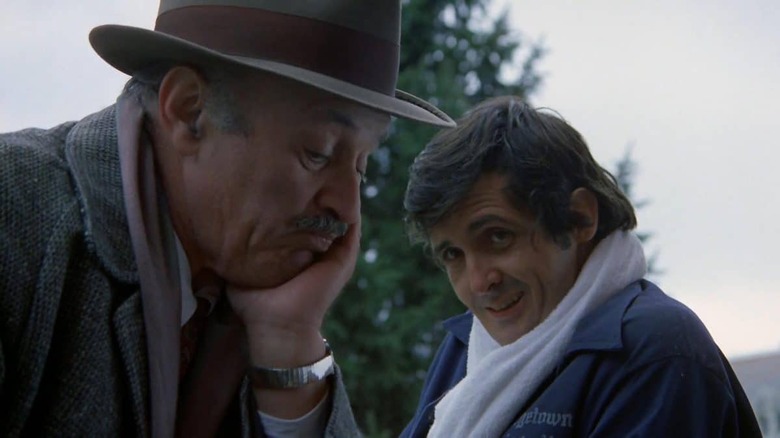
That's all pretty grim reading so I'd like to conclude on a more optimistic note. Over the past few weeks, I have been writing a series of explainers on "The Exorcist" franchise, and spending time with the movies has reinforced the feeling I've always had about the series. Despite their atmosphere of brooding malevolence, I'm struck once again by the positive view of humanity that the films represent. In "The Exorcist" and "The Exorcist III" in particular, William Peter Blatty focuses on selfless, fundamentally good people prepared to make heavy sacrifices to beat the Devil.
In the original film, you have Father Merrin (Max von Sydow) and Father Karras (Jason Miller), two priests who lay down their lives to save a young girl from demonic possession. The Director's Cut concludes with Lieutenant William Kinderman (Lee J. Cobb) walking off arm-in-arm with Father Dyer (William O'Malley), leaving us on a note of comradeship after the death of their mutual friend, Father Karras.
Kinderman is an interesting character. As a homicide detective, he has seen the worst of mankind, but he is defined by his kindness. The name Kinderman is derived from the German "Kindermann," or Children Man, but we can also take it literally in English; there are few kinder men in horror history.
Blatty brought Kinderman and Dyer back for "The Exorcist III," and their ornery friendship is the heart of the film. After Dyer is murdered and Father Karras's body is possessed by a serial killer, Kinderman performs the ultimate act of love, shooting the latter to free his soul from spiritual torment and sacrificing himself in the process.
There is plenty of evil in the world but, whether you believe in God and the Devil or not, the original "Exorcist" trilogy reassures us that we have the power to defeat it.
Read this next: The 95 Best Horror Movies Ever
The post The Disturbing Connection Between Real-Life Killers and The Exorcist Movies appeared first on /Film.
/Film https://ift.tt/YZVFiOG January 26, 2023 at 12:23PM
Комментарии
Отправить комментарий